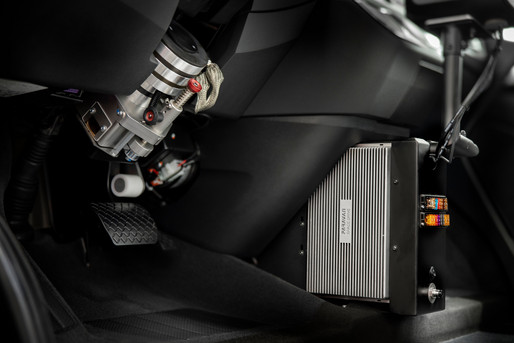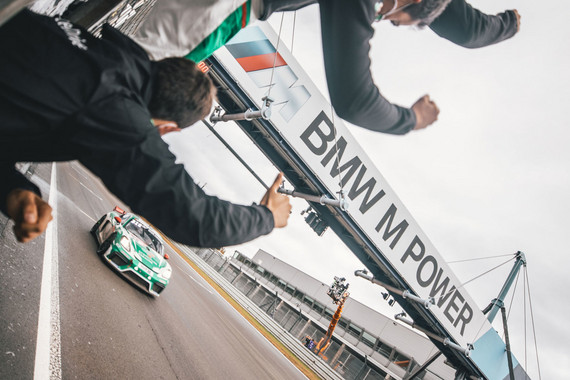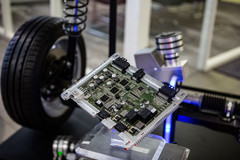In the future, autonomous and partly autonomous vehicles will have no mechanical connection between the steering wheel and the steering gear. Schaeffler has a pioneering spirit as well as innovative strength and offers with Space Drive a key enabling technology for tomorrow's automated, autonomous, and connected vehicles that is currently being developed with a view to volume production.
The origins of Space Drive can be found in the disabled mobility sector. The system has been used in road traffic since back in 2005 and has proven its worth with well over a billion accident-free kilometers in both the disabled mobility and industrial sectors. This niche product is now leading the way in a trend that will permanently change future car development - autonomous driving.
The steering signals are transmitted via the multi-redundant Space Drive control module to the servo motor using wires. It already makes it possible to dispense with a mechanical connection between the steering wheel and steered wheels as well as operating elements such as a steering wheel and pedals in fully automated or autonomous driving mode (levels 4 and 5). A vital requirement for this step is that the system has to be absolutely fail-operational. This means that the overall system will continue to work, even if system components fail - in other words, the system remains fail operational.

Innovative safety architecture
Space Drive is an individually adaptable, fail-safe system that can be used in many different applications in the automotive or industrial sectors: from drive-by-wire solutions in vehicles for people with disabilities to controlling test, special, and commercial vehicles, and scalable with up to 40 control devices for driving in convoys. It does not matter whether the driver sits on the right or the left or whether the vehicle is controlled by a digital steering system or driven fully autonomously by GPS signal.
The system has been approved for road use in accordance with ECE-R13 (braking) and ECE-R79 (steering). The processor unit (ECU) fulfills the highest requirements in accordance with the ISO 26262 ASIL D functional safety standards. Today, it already allows for use in a real test environment, thus giving rise to well-founded conclusions about the technology being tested. The safety concept is based on triple redundancy. Three processors handle digital (CAN/FlexRay/LIN) or analog input signals (joystick/steering wheel) in real time and control redundant servo motors in accordance with a logical validity check based on the two-out-of-three majority principle to operate the gas and brake pedals or the steering.
Individual component failure therefore does not lead to functional failure because all the components that are relevant to the representation of the function are available redundantly. The processors that monitor one another can detect errors as they occur - and an appropriate compensatory response is activated.
The system is currently being completely redesigned in the third generation of the Space Drive. Schaeffler is integrating more powerful electric motors and electronics as well as completely re-engineered and individually adaptable/modular software. The system costs are also being reduced significantly. Space Drive 3 is protected from cyber attacks on multiple levels based on hardware and software.
Motor sports - development work in extreme conditions
Motor sports vehicles are also used as prototypes alongside road vehicles. Since last year, the system has been tested and further developed under extreme motor sports conditions. The Space Drive technology was approved by the German Motor Sport Federation (DMSB) in 2019 for the Audi R 8 LMS GT3 as the first vehicle of its kind in the world and has now become firmly established in the series regulations. By using a real-time operation system, it has been possible to significantly increase responsiveness as well as the dynamics of the Space Drive system. The tracking has also been further optimized by a new software feature. The force-feedback steering wheel used is also being developed further alongside the steering system, while the diagnostic capability of the system has been improved by additional sensors. The lessons learned from this application are incorporated directly into the further development of the system.




